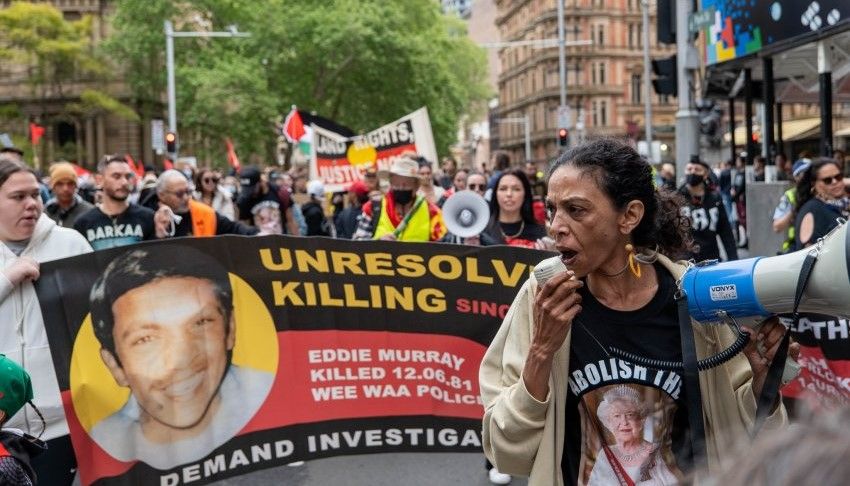
The annual Closing the Gap report, released by the Productivity Commission, found that First Nations rates of incarceration, child removal, suicide and child school readiness are becoming worse, not better.
The annual report, which began in 2008, also found significantly higher rates of success where First Nations-led programs were given priority.
First Nations people are still disturbingly overrepresented in prisons. They make up just 3% of the total population, but account for almost 30% of the prison population.
These rates are worsening: the number of First Nations people in prison rose from 2142.9 per 100,000 in 2019 to 2222.7 in 2021.
Among incarcerated youth aged 10–17 year old, First Nations people account for more than half the prison population.
Three quarters of imprisoned 10–13 year olds are First Nations. While the report said the 30% reduction target is on track, there are still 23.2 First Nations children, aged 10–17 years old, in prison for every 10,000 children.
Incarceration rates for First Nations young people are still 18 times higher than for other youth, it found. First Nations youth were more likely to be targeted by police and taken to court and jailed.
One of its recommendations is to raise the minimum age of criminal responsibility from 10 to 14 years. This would lower the number of First Nations young people in prisons by 8%.
Black deaths in custody have also continued to rise: at least 527 people have died since the 1991 Royal Commission into Aboriginal Deaths in Custody (RCIADIC), according to the National Deaths in Custody Program. In the 12 months to October, 29 First Nations people died in custody.
Labor and Coalition governments have failed to implement the royal commission’s 339 recommendations, which are heavily slanted towards keeping people out of the prison system. If the recommendations had been implemented, the number of deaths would have been reduced.
The United Nations Committee Against Torture recently found that “causes of death included ‘use of force, lack of health care and suicide’”. It recommended all deaths in custody be “promptly, effectively and impartially investigated by an independent entity”.
The report found that First Nations children are being taken from their families and communities at higher rates than ever before, including during the Stolen Generations years.
More than 22,000 children are removed every year, and numbers are rising. Only 16% of removed children are reunited with their families and less than half are placed with First Nations carers.
The key recommendations from the 1997 Bringing Them Home report have been ignored.
The Family Matters Report 2022, which tracks the overrepresentation of First Nations children in out-of-home care, found that 42% of those children are First Nations.
First Nations children are 10 times more likely to be removed from their home than other children.
The Closing the Gap report also found that First Nations people suffer higher rates of physical and mental health issues.
The life expectancy for First Nations men is still 8.6 years less than other men and the rate for First Nations women is 7.8 years less than other women.
While the discrepancy in life expectancy has dropped slightly over the past decade, the report found that the no-gap life expectancy target will not be met.
Mental health is worsening, with suicide rates rising from 25 out of 100,000 people in 2017 to 27.9 in 2020. Targets for a “sustained reduction in suicide towards zero” are not being met.
The report also tracks the land “controlled” by First Nations people: in 2022 they controlled 4 million square kilometers of land and 90,555 km2 of the sea.
While this is a rise from the 3.9 million km2 of land and 90,252 km2 of sea in 2020, it is still a far cry from real land rights and compensation for stolen land. The number of fossil fuel projects being contested by First Nations peoples highlights the inadequacies of Native Title law.
Minister for Indigenous Australians Linda Burney said next year’s Closing the Gap would show progress.
But given that Labor governments in Western Australia and the Northern Territory continue to lock children up and ignore First Nations custodians’ demands to cease fossil fuel projects, Burney’s promise will not come about unless federal Labor changes tack.